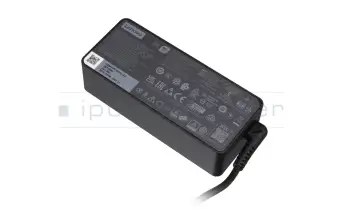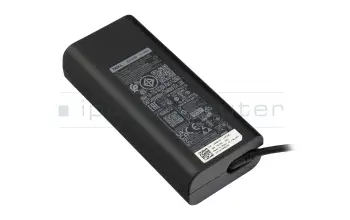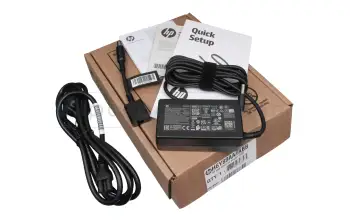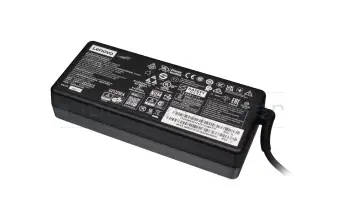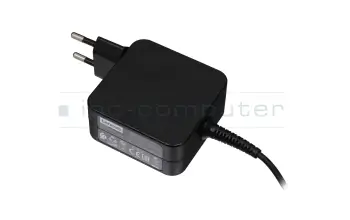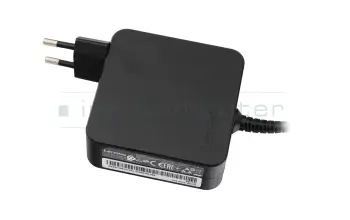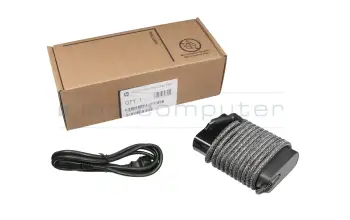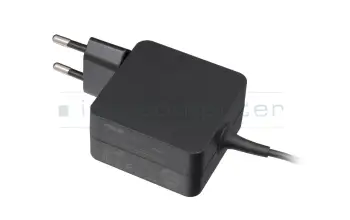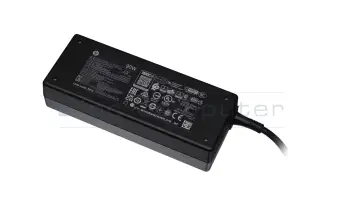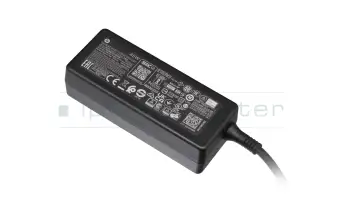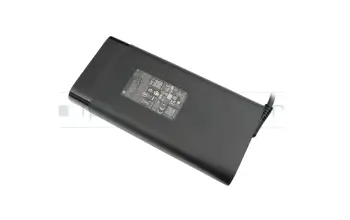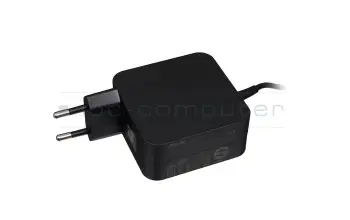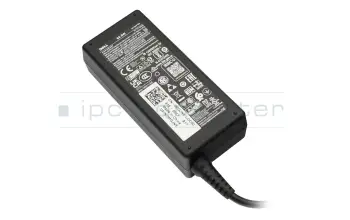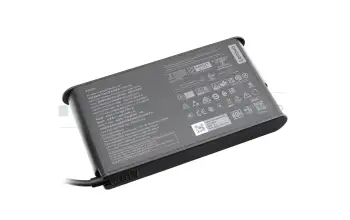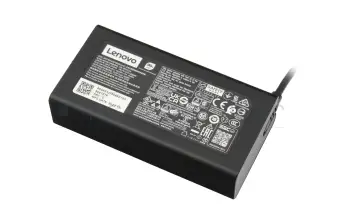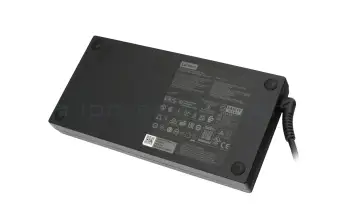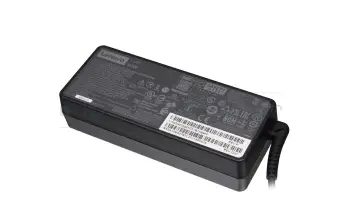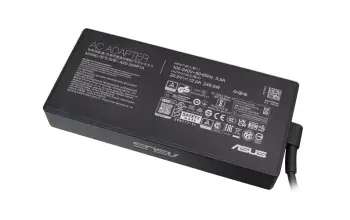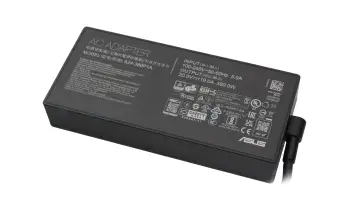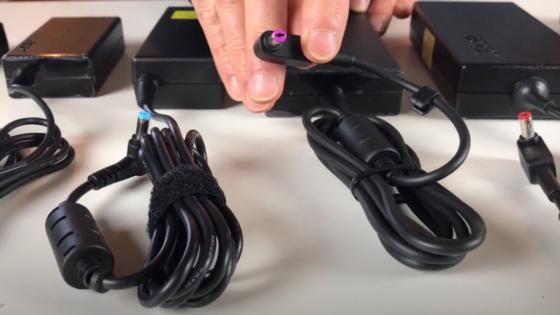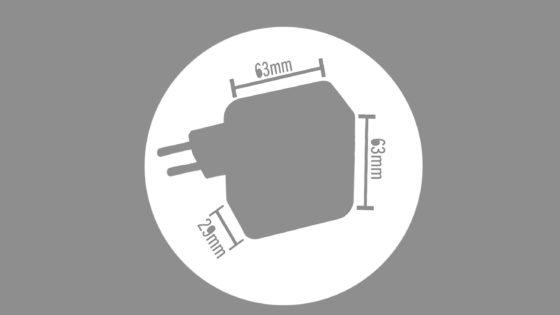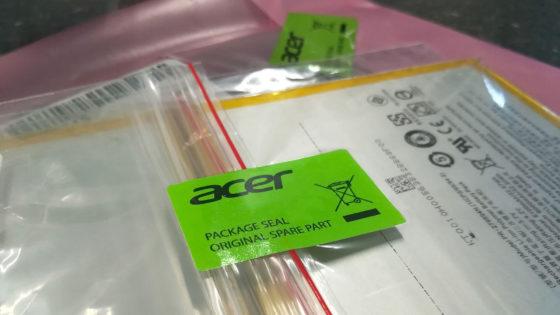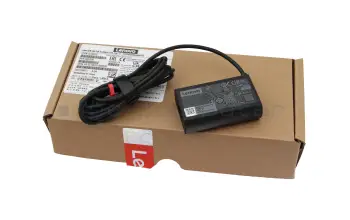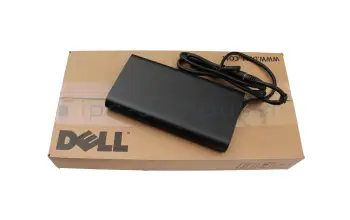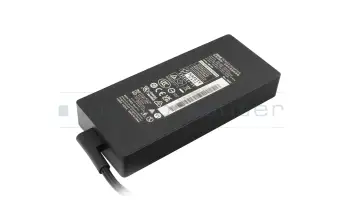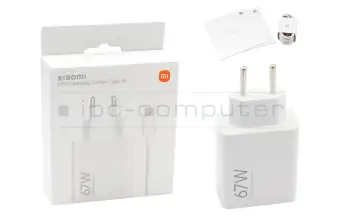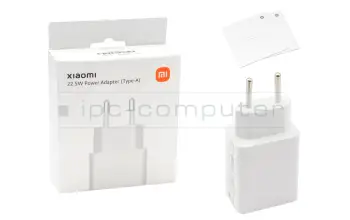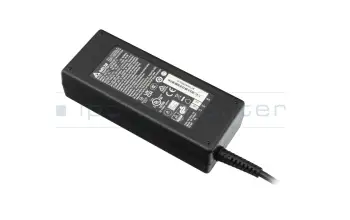L'achat de chargeurs pour ordinateurs portables chez un grossiste est favorable
Vos avantages concrets lors de l'achat d'un chargeur pour ordinateur portable chez IPC-Computer
- Vente de chargeurs pour ordinateurs portable depuis 1999
- Notre exigence : lister tous les chargeurs d'origine dans la boutique et pouvoir les livrer immédiatement
- Cela nous a aidé à créer un énorme entrepôt de pièces d'ordinateur portable avec actuellement plus de 20'000 adaptateurs AC en stock
- Les meilleurs prix: achat direct auprès des fabricants : ACER, ASUS, DELL, Fujitsu, HP, Lenovo etc
- Chaque chargeur est fourni gratuitement avec un cable de charge européen correspondant
- Commander rapidement et en toute sécurité le bon adaptateur avec la recherche d'adaptateur IPC, vous pouvez trouver le chargeur rapidement et facilement, parmi plus de 120'000 modèles d'ordinateurs portables
- Et si vous restez bloqué sur le fabricant et le modèle, vous pouvez également rechercher les caractéristiques techniques telles que les watts, les mAh, les dimensions des connecteurs, la taille, la conception, etc. - ça ne pourrait pas être plus facile!
- Les promesses de solution d'IPC - si l'achat de l'adaptateur ne mène pas au succès, nos techniciens vous aident
- La satisfaction du client lors de l'achat d'un chargeur est primordiale - un coup d'oeil dans nos commentaires ou dans notre livre d'or le confirme depuis 2004
![[Translate to Französisch:] Notebook Netzteile [Translate to Französisch:] Notebook Netzteile](https://cms25.ipc-computer.de/fileadmin/_processed_/7/b/csm_notebook-netzteile_01_ea48298018.jpg)
Trouver l'adaptateur secteur pour ordinateur portable qui convient en fonction du modèle ou des caractéristiques
Dell T5K83 260W power supply unit for

plus frais d'expédition
Dell R6P6M 1600W 80 Plus Platinum power

plus frais d'expédition
Dell R6W5C Power Supply Unit for

plus frais d'expédition
HP AD052-69003 1.6 kW power supply unit for

plus frais d'expédition
HP AD172-67003 Power Entry Module with

plus frais d'expédition
Dell C336M 600W Power Supply Unit for

plus frais d'expédition
Dell CN35N 1400W hot-swappable power

plus frais d'expédition
Dell CN782 Power Supply, 650W,

plus frais d'expédition
Dell TDNVF 320W Micro Tower power supply

plus frais d'expédition
Dell TK034 1 kW Power Supply Assembly,

plus frais d'expédition
Dell TK365 485W Power Supply Unit for

plus frais d'expédition
Dell UJ570 Nonredundant Power Supply

plus frais d'expédition
Dell UJ688 470W Redundant Power Supply

plus frais d'expédition
Dell UJ693 470W Redundant Power Supply

plus frais d'expédition
Dell UJ722 ESG-X PWR SPLY 12V D W/BLWR

plus frais d'expédition
Comment fonctionne la recherche de chargeurs d'IPC-Computer?
D'abord, vous avez besoin, lors de l'achat d'un chargeur, de connaître les valeurs de tension et de courant requis par votre ordinateur portable. Une erreur courante, pourquoi le portable ne charge pas après un changement d'alimentation, est le résultat d'un choix d'adaptateur avec une puissance trop faible. Avec la recherche d'adaptateur, c'est facile, ici vous pouvez facilement filtrer l'alimentation correspondante avec les données techniques.

Christian Kopf
Responsable d'atelier
6 Tipps vom Werkstatt Leiter die beim Notebook Netzteilkauf helfen
- Defekte Laptop-Netzteile sind wohl einer der Hauptverursacher beim Fehlerbild: Notebook lässt sich nicht mehr einschalten
- Wenn das Netzteil defekt ist, kann das schnell zu einem Mainboardschaden führen - Oft bedeutet das dann "wirtschaftlicher Totalschaden!"
- Tipp: Beim Defekt am Stecker oder am Gehäuse - schnellstmöglich ein Ersatznetzteil kaufen
- Seit Jahren rät unser Notebook-Techniker von Universal Netzgeräten oder Nachbauten ab. Viel zu oft hatten wir hier kapitale Notebook-Defekte in der Werkstatt
- Wir bieten auch deshalb ausschließlich Originalware an, die wir direkt bei den A-Brand Herstellern beziehen
- Wir geben gerne bereitwillig unser Expertenwissen im Notebook-Doktor Blog und unserem YouTube Kanal an Sie weiter
Interessante Blogbeiträge Rund um das Thema Notebook Netzteile
Laptop AC Adapter FAQ
Here you can find all questions and answers surrounding AC Adapters.
- I have a 65 watt power supply, can I also use one with 90 watt?
Yes, you can use a power supply with a higher wattage, however you need to pay attention that the voltage doesn't deviate more than one volt from the voltage of the original power supply.
It also doesn't work the other way around; your new power supply needs to have at least the same wattage as the old one.
- I would like to use my Laptop in my car, what kind of power supply do I need?
To use your laptop in a vehicle you need a car-adapter, which converts the 12 Volt your car provides to 19 Volt most Laptops need.
If there is no car-adapter, that is compatible to your notebook, you can use an inverter which generates mains power from the power, supplied by the car. You can then plug your normal power supply into it.
- Can I use my old power supply for my new Notebook
Whether you can continue using your old power supply depends on three factors.
- Is the plug identical to the one of your old Notebook?
- Is the wattage greater or equal then the one of the old power supply?
- The Voltage has to be the same, however a tolerance of +/- 1 Volt is acceptable.
- Can I use chargers from other manufacturers for my Notebook?
Generally you can use a charger from any manufacturer with any device, as long as the voltage and the plug are the same and the wattage is greater or equal to that of the original power supply.
See also: - Can I use as well 19 Volt as 20 Volt chargers?
This is possible, when the difference between the voltage your laptop needs and the one your charger provides is not greater than 1 Volt. So, if your laptop needs 19,5 Volt, both 19 Volt and 20 Volt chargers can be used.
Furthermore, you must make absolutely sure that the plugs of the chargers are not only physically identical, but also the pin assignment is identical, ie the pin, which is positive, it should be the same with the other charger. Be careful with chargers that have more than two pins, often a control signal is used here.
Additionally, the replacement charger should be able to provide at least the same amount of power as the old one. If it is not specified on the charger, it can be calculated from the voltage and the amperage (W = V * A).
- Will my battery charge faster with a power supply that has a higher wattage?
No, because a circuit in the Notebook controls how much power arrives at the battery and not the charger.
- My laptop battery is no longer charging, is my charger broken?
Not necessarily, try taking your battery out (if possible) and starting the computer while connected to the charger in question. If it starts, the power supply is working but something in the Notebook is broken.
There are also multiple indicator lights, on the laptop, whether it is being charged, also this can be seen in most operating systems. You can also use the indicator light found on some chargers to diagnose an issue with a cable.
- My power supply is getting pretty hot, is that normal?
Power supplies are subject to certain specifications and can reach up to 50°C. The most amount of heat is produced when working on the Notebook and charging the battery at the same time. As long as you can touch your charger without getting burnt, its temperature is probably within specification. However, it is most important, that the heat can be dissipated, therefor you should never put your power supply under a blanket or in a closed drawer.
- My USB-C charger will not charge my device correctly.
Oftentimes the reason for this is, that with USB-C all devices have to agree on the current and voltage used for charging. Therefore, all involved devices must support USB Power Delivery, so that enough power can be transmitted to charge devices such as laptops. The cable used for charging is also part of these devices, which means you have to make sure your cable supports USB-PD. If one or more devices do not support USB-PD a maximum of 15 Watt can flow.
- Why is my power supply humming, hissing or beeping?
Basically, a power supply converts the AC voltage from the mains into a lower DC voltage for a consumer. In the case of a laptop power supply, the output voltage and maximum output current are usually fixed.
The main component of any power supply unit or power supply is a transformer. In laptop power supplies, this is usually characterized by a very compact design.
The 220-volt alternating current from the wall socket generates a magnetic field in the transformer, whose charge changes from positive to negative 50 times per second. These electrical oscillations can cause parts of the transformer wires, iron cores and coils to move slightly. While the parts are usually glued together tightly, the connections can become partially loose for a variety of reasons, or the insulation on the coil wires can become brittle. And this can cause the annoying noises. The power supply hums.
The movements of the transformer components can also be transferred to other components in the very compactly designed laptop power supply and cause additional small vibrations there, which also cause noises.
Reassuring when the power supply hums: Noise developments in power supplies don't affect the electrical functionality and are usually harmless.
Depending on the cause of the noise, mounting the power supply differently, e.g. on a different base or on a piece of foam rubber, may solve the problem.
- Why does the plug of my new power supply not fit into my notebook, even though the part number is the same as the old power supply?
You ordered using the part number of the power supply manufacturer (DELTA, LiteOn, …) and not the notebook manufacturers part number. The power supplies are often bought by the Notebook manufacturers and then outfitted with different plugs. These plug variants are no longer considered in the part number of the power supply manufacturer. An example: ADP-90MD H is sold by Acer with a plug with a 5,5mm outer and a 1,7mm inner diameter but other brands sell it with a 5,5/2,5mm plug.
- What types of mains plugs can I order?
Here is a list of country specific mains plugs, which we can deliver with your new power supply.
Please note, that you can not order the mains plugs on their own!
Land Steckertyp Belgium(BEL) F Denmark(DEN) C oder F Denmark(GER) C oder F Finland (FIN) C oder F France(FRA) C oder F Greece(GRE) C oder F Italy (ITA) C oder F Liechtenstein (LIE) C oder J Luxembourg (LUX) C oder F Netherlands (NED) C oder F Norway (Noder) C oder F Austria (AT) C oder F Poland (POL) C oder F Portugal (POR) C oder F Romania (ROU) C oder F Sweden (SWE) C oder F Switzerland (CH) C oder J Spain (ESP) C oder F Turkey (TUR) F Great Britain(UK) G United States(US) A oder B 





- How do I find the right power supply for my Notebook in your online shop?
In our online shop you can choose your notebook in the menu on the left, then all compatible articles will be listed.
If you can't find your model, you can also enter the manufacturer part number of your power supply in the search.
Examples for manufacturer part numbers:
Toshiba: A000007000, K000060890, PA3468E-1AC3
Acer: AP.06501.024, 7452480100
Fujitsu-Siemens: UWL:76-01B900-5A, WTS:25.10173.071, FSP:811002431
Asus: 90-XB0KOAPW00070Q
HP: 381090-001
Lenovo: 40Y7673Examples for part numbers, that can also be found on power supplies but are not manufacturer part numbers:
ADP-60SH B, PA-1650-54, ADP-90CD, PA3468-1AC3

- How do I find out how what the output power (watts) of my power supply is
All the necessary information to calculate it can be found on the back of the power supply. To calculate the output power of the unit, use the specifications listed under "output".
Calculation:
Ampere * Volt = Watt
Example: 4,74 A * 19 V = 90,06 W
The power supply therefor has 90 Watt.
